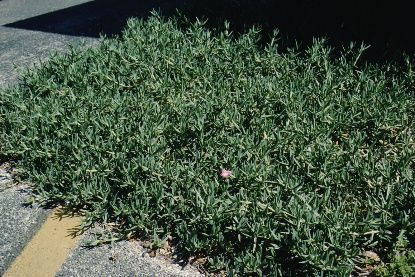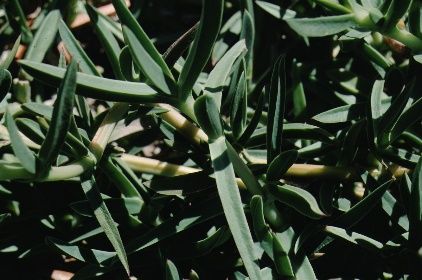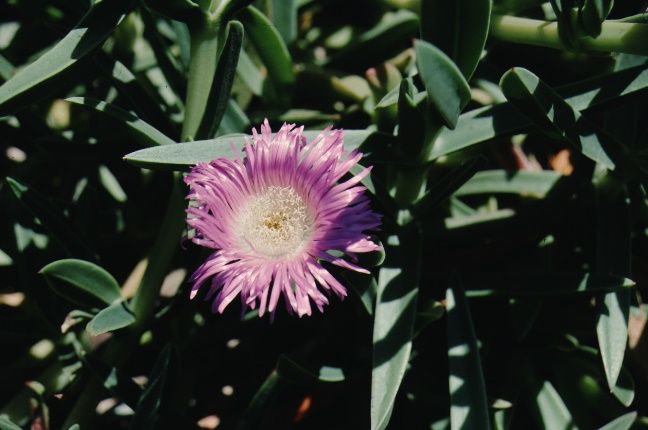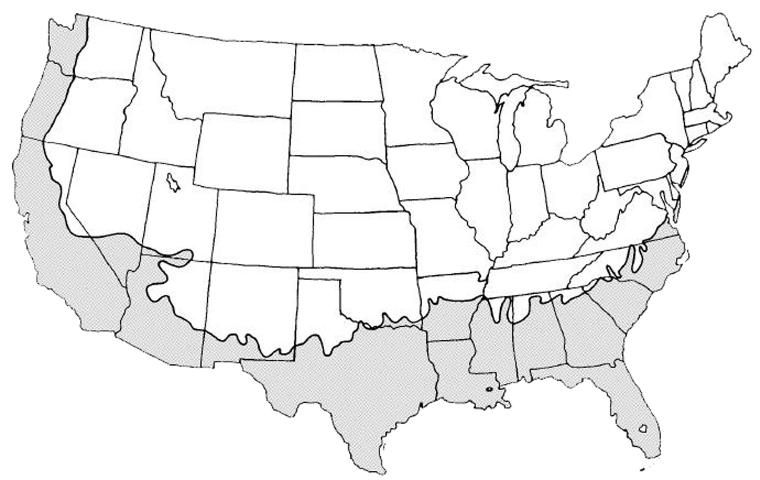Introduction
A common road-side ground cover in California, few test plantings of ice plant have been tried in Florida. There is at least one planting in Clearwater. Those in California grow nicely in full sun in hot conditions. The plant stays low to the ground or will cascade over a retaining wall. Flowers are produced on a regular basis.

Credit: Edward F. Gilman, UF/IFAS

Credit: Edward F. Gilman, UF/IFAS

Credit: Edward F. Gilman, UF/IFAS
General Information
Scientific name: Carpobrotus edulis
Pronunciation: kar-poe-BROE-tus ED-yoo-liss
Common name(s): ice plant, hottentot fig
Family: Aizoaceae
Plant type: ground cover
USDA hardiness zones: 7B through 11 (Figure 4)
Planting month for zone 7: year round
Planting month for zone 8: year round
Planting month for zone 9: year round
Planting month for zone 10 and 11: year round
Origin: native to Africa
Invasive potential: aggressive, spreading plant
Uses: ground cover
Availability: grown in small quantities by a small number of nurseries

Credit: undefined
Description
Height: ½ to 1 feet
Spread: depends upon supporting structure
Plant habit: prostrate (flat); spreading
Plant density: dense
Growth rate: fast
Texture: fine
Foliage
Leaf arrangement: opposite/subopposite
Leaf type: simple
Leaf margin: entire
Leaf shape: lanceolate
Leaf venation: none, or difficult to see
Leaf type and persistence: evergreen
Leaf blade length: less than 2 inches
Leaf color: green
Fall color: no fall color change
Fall characteristic: not showy
Flower
Flower color: pink; yellow
Flower characteristic: summer flowering
Fruit
Fruit shape: unknown
Fruit length: unknown
Fruit cover: unknown
Fruit color: unknown
Fruit characteristic: inconspicuous and not showy
Trunk and Branches
Trunk/bark/branches: not applicable
Current year stem/twig color: green
Current year stem/twig thickness: very thick
Culture
Light requirement: plant grows in full sun
Soil tolerances: sand; loam; acidic; loam
Drought tolerance: high
Soil salt tolerances: unknown
Plant spacing: 24 to 36 inches
Other
Roots: not applicable
Winter interest: no special winter interest
Outstanding plant: not particularly outstanding
Pest resistance: very sensitive to one or more pests or diseases which can affect plant health or aesthetics
Use and Management
Ice plants are regularly irrigated in the California desert climate. However, in Florida, root rot may be the greatest concern in an irrigated landscape. You might try locating it in a place where drainage is exceptionally good (on a sandy ridge) and where irrigation does not reach.
Pests and Diseases
The plant has not been tested well enough in Florida to report on pest or disease problems.